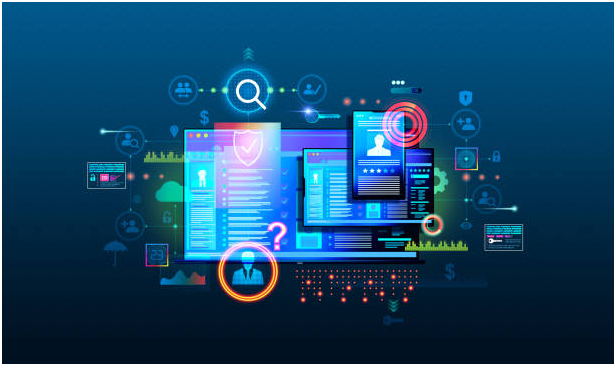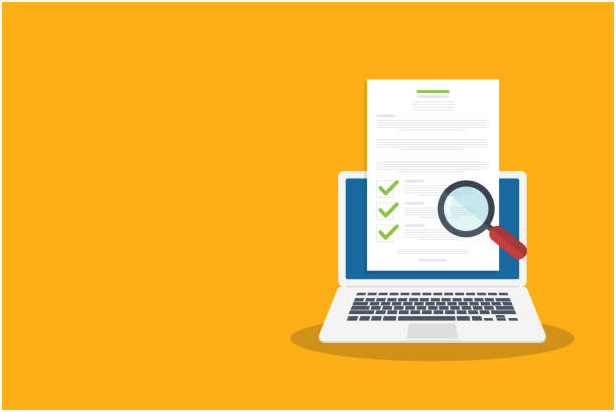The verification of documents is the process of verifying the authenticity of documents using automated tools. The goal is to confirm the legitimacy of documents by comparing them with official records.
Why Is Verification Of Documents Essential?
Financial institutions must verify documents. If businesses involved in financial transactions don’t verify documents, they endanger themselves. Because scammers constantly try to hack the system by using fake or incomplete records. So, by verifying documents, no one can access the account using incorrect information. When someone wants to access the account, the system asks them to prove their identity. The request will be rejected if any discrepancies are found in the data provided by the user or the referenced data. It helps prevent identity theft and account takeovers.
In Business, Responsibility For The Verification Of Documents
In the financial sector, the mortgage consultant verifies documents before application processing. The process will be completed by asking for the required documents, checking whether they are complete, and demonstrating their authenticity. The process must ensure that incomplete and falsified documents are not verified. The process is error-prone to prevent scams.
Industries That Require Verification Of Documents
Know Your Business (KYB) and anti-money laundering (AML) requirements must be followed by companies that engage in financial transactions. Following industries use online verification of documents
- Banks
- Investment sectors
- Insurance companies
- Lenders
- Human resource
- Health care
- Cryptocurrency exchanges
- Credit unions
Any business that runs online can leverage document verification and experience its benefits.
Online Vs Traditional Document Verification
Traditional document checking is time-consuming and frustrating because the person has to wait in long lines and present themselves physically for their turn. That process can take hours or weeks because processing takes time. And identifying fake documents is quite challenging because fraudsters have the proper systems and printers to create counterfeit documents. Sometimes, checking that the document is 100% valid is impossible.
With automated software and modern technologies, online document verification makes things easy and possible. Businesses employ AI software and machine learning to determine if the paper is genuine or a forgery. These tools get the required documents, extract information from them, and authenticate them by matching them with the information in the database. The process completes in seconds and benefits businesses.
How Can Verification Of Documents Be Done?
The online verification of documents depends on several factors, including your industry and the type of documents you are dealing with. It starts with collecting records and ends with extracting information from them. Then documents are authenticated and given a final check by involving a person in the loop. That’s how it works. Let’s explore it deeply.
The steps of verification of documents are
- Collection of documents
- Data extraction
- Validation of documents
- Verification of documents
Collection Of Documents
Firstly, the verification of documents requires certain documents. The user is asked to take clear pictures and upload them. Then the document is pre-processed and analyzed to determine whether it is complete. And if it fulfills the business requirement. Are the documents for the entirety of that person, or are they partial? Is the information on the documents readable or not? The documents that don’t contain the required information will be rejected, and the complete records will be sent for verification.
Data Extraction
When a user uploads a picture of the document, they click the image of said document. To get the picture’s information, the paper passed through several checks and methods like optical character recognition (OCR), pattern recognition, and other methods. Once all the data is extracted, it matches the data already found in the database.
f a person submits a utility bill as proof of address, that address must match the address initially provided by the user. If data from both sources matches, further proceedings will be taken, otherwise, the application will be rejected.
Validation Of Documents
The next and most crucial step is to validate the data by applying various validity checks. The validity checks depend on the type of documents being verified.
The validity checks include
- Checking brightness
- De-skewing images
- Cropping and edge detecting
- Color space analysis
- Matching the ID image with the selfie
It is crucial to prevent identity theft and document fraud and help businesses grow safely by providing document validation services.
Verification Of Documents
If the documents are suspected to be flagged or have errors detected against them, the business has two options. Either to reject the application or move for human-in-loop documentation verification, which is basically a combination of manual and automated methods. This step can require additional documents, and the user is asked to upload them for final review.
Visit here idgod for How Fake IDs look.
To Wrap Things Up
Online verification of documents processes and verifies hundreds of applications and prevents fraud and financial crimes by confirming them. It has tools and automated software for extracting data from papers and checking them. Regulations about Know Your Business (KYB) and anti-money laundering (AML) must be followed during the procedure.











Leave a Reply